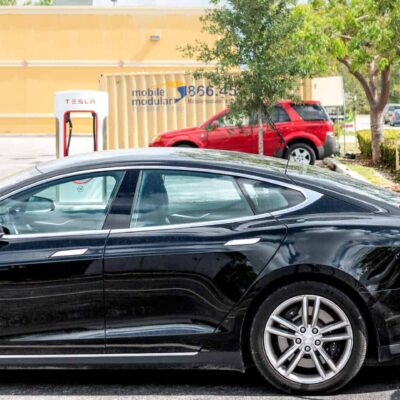In Part One of our interview with supply chain expert, Robert Handfield, Ph.D., we discussed the impact resulting from COVID-19 to supply chains and what history has shown us. In Part Two, we look at what opportunities and risks lay ahead.
1) The world is anxiously awaiting a vaccine for COVID-19. Once one has been developed, what distribution challenges will the world face?
The length of time to isolate a strain and develop a vaccine is often six months or longer, so hospitals and organizations should rely on other forms of prevention in the short term. Interviews with key experts also reveal that, once a vaccine is identified and isolated (which could take 6 to 12 months), the actual vaccine treatment requires two shots, spaced 21 days apart, which further lengthens the response time. Distribution of vaccines will be an important issue that will involve tradeoffs between different strategies, as well as a national distribution strategy. Today, the lack of centralized leadership is evident. In addition to the distribution of vaccines, concurrent testing will need to continue to occur. The test reagent (chemicals) supply chain for testing is a growing concern with several vendors providing substantially reduced quantities of these supplies to clinical laboratories through the end of 2020. That said, governments will need to monitor multiple supply chain issues associated with clinical laboratory partners to provide regular feedback to federal testing points of contact to monitor vaccine and testing status. We will likely need a set of ‘Pandemic Testing and Vaccination Boards,’ possibly one for each state. They would be the managers of the overall process to ensure that obstacles to production and delivery of vaccines and testing are overcome to meet the state’s needs. They might report into a national task force. They should be the keepers of all the data but that could turn political.
2) Innovations are often reliant on foreign-made components like semiconductors. How can U.S.-based manufacturers take advantage of this opportunity, and what risks are involved?
The cost of moving to a source across the ocean has been escalating, not just because of labor costs but also because of transportation, friction, tariffs, duties, and the perception that not having something is a major risk that will shut down your business. Thus, the movement towards localization is natural, as force and pressure occur when more matter is located within a smaller area. To explore this issue, consider the case of mobile phone technology, and how local producers in India and China have taken massive market share, by moving towards regional supply chains that produce locally for local markets. This is related to the idea that proximity drives lower cost, explaining why phone manufacturers are taking market share in China, as they are closer to customers, and closer to the point of sale (POS). For the same reason, Amazon is opening DC’s close to the POS in the United States, and other than Costco, most retailers are moving to a same-day or next-day logistics delivery model.
Physical compression and localization of supply have many attributes in common. Because heavy things are more expensive to move, we find that localized production of large products – vehicles, fabrications, etc. is much more cost-effective. On the other hand, small high-value items, such as semiconductors and electronics, can be moved and can be shipped economically through air freight. So, the opportunity is less for US-based manufacturers to exploit this market, as there is already a substantial advantage given that the epicenter of electronics manufacturing is in Asia.
However, there is an opportunity to move towards localization through the “internet of things” (IoT) that is developing new products. As supply chains reap the benefit of that change, more issues have to be handled regionally because of the size/cost/ratio issue. For instance, GE is building the largest windmill in the world in the Netherlands – and has to build a factory in France to produce it as it is too big to move. The blades are the size of 3 football fields – and have to be closer to the point of consumption of sale – and that is the physics of supply chain tacking effect. Supply chain
costs are determined by parameters such as weight, mass, size, and distance, and logistics costs are based on cubic feet and volume. If you reduce any one of these parameters, you reduce cost, reduce waste, and increase speed. If you reduce ocean cargo, there is also less carbon footprint damage in addition to increased speed. Research shows that ocean shipping is 8% of the carbon footprint due to the huge amounts of fuel consumed. That is not a positive, and in general, there are trends around moving away from large, heavy things to smaller, localized production of what
we consume. So, for heavy things used in the US, the advantage goes to US manufacturers.
US organizations that understand these natural laws of design will allow the invisible hand of the market to help them understand the dynamics and evolutionary flow of what is happening in a particular channel and can begin to predict which types of products and services need to become localized through analysis of total costs. Intelligent executives realize there is a reason why the price or cost is so low in a country. This is ultimately reflected in the equation of total cost, which includes the cost of poor quality, late delivery, impact to the brand, supply chain disruptions, etc. Also, the cost of unsafe and inhumane working conditions is being regulated by global governments. It is ultimately going to become much more apparent as millennials shift to social media that highlight these issues, which may move
production more to local sources.
As product design and supply chain design shifts occur over time, the evolutionary flow of these supply chain designs is altered forever. People do not realize that the fallout from many of the trade wars and the COVID event permanently shapes how global companies do business. The move towards localization of global supply bases is beginning already, spurred on by political events and global epidemics.
3) What industries are developing new technology or commodities that you feel could be vulnerable to supply chain disruption in the next year, or should another crisis strike in the next 3-5 years?
I believe all industries are subject to disruption. The world is becoming a riskier and more unstable place. Those organizations that promote visibility will be able to survive the coming instability.
Previous supply chain experts have emphasized the importance of time as a core component of supply chain performance. Organizations such as Amazon created an entire industry using time as their vehicle. In Amazon’s case, this time focus manifests as same- or next-day shipping. We are also observing the evolution of global supply chains more focused on working capital (as opposed to profit margin) as a key measure of performance. Working capital is the most apparent outcome of the increased velocity of a company’s financial flow, fundamental to organizational growth.
Velocity is a key strategy of the Flex Corporation, one of the world’s largest contract manufacturers. Flex created the PULSE, a company-wide mobility system that created visual representations of all material flows in Flex’s 180-factory network. The resulting change in culture and behavior in the organization was revolutionary. The PULSE created immediate transparency into the flows of all parts of the business and became the “North Star” that guided all ensuing action. This transparency made all business flows visible. This meant that all executives were immediately accountable—they could no longer hide or make excuses.
Transparent business flows introduced a new way of operating at Flex. The new transparency even sparked debates between the finance and legal teams about whether confidentiality was being breached! Once inaccuracies and blame for flow blockages were eliminated, the gravitational pull of time vectors became evident to everyone. This change led materials to flow more freely, and to the right places. With flow blockages reduced, material also moved more quickly.
At Flex, corporate transparency kept executives more aware of these flows, so they could predict problems in the supply chain and act more quickly to solve them.
Imagine that Flex is a riverboat, and its executives are its crew. If they can spot a logjam ahead, and send someone out to break up the jam, the water will move unimpeded, carrying the riverboat downriver faster. Armed with the knowledge that logs tend to jam at this particular spot in the river, the crew might redesign its route to avoid it or work with loggers to ensure that logs don’t jam at that spot in the future. Riverboat rerouting could be likened to revising a company’s system design. The executive/crew gains a greater understanding of the physical limitations of the infrastructure/river used to support the flow. This new knowledge drives investment in other equipment or capital that can further enhance flow and velocity.
Improving asset velocity, and specifically ensuring that inventory is constantly moving, is critical to a healthy supply chain. The velocity of planning and execution can produce improved outcomes: better customer service, higher inventory turns, greater agility in response to change, increased reaction time to supply chain disruptions, the list goes on.
A company’s ability to act quickly based on early notification of events is critical to creating supply chain immunity. As we think about how the flows of nature occur, a company’s ability to detect the signals and act quickly before the rush, before the shift, and before the event takes place is critical. So how do we make sure that, in a post-COVID world, we continue to optimize and design supply chains based not just on the lowest cost, but also on doing the least damage and flexing under pressure?
The emerging capability will be something that we call supply chain immunity. Supply chain immunity simply means the ability to survive in the face of massive disruptions of products and services, much like the body builds immunity to viruses such as COVID after being exposed. However, many of us in the fight have noticed that the concept alone is not enough. We need the how, not just the what, in terms of how to act in emergencies. We need to know how to prevent recent supply chain failures from recurring, should another pandemic or global event affect all global supply chains. What we need is a plan for ongoing and persistent immunity.
For more information about working with Robert Handfield, Ph.D., contact a client manager at WIT.
“WIT’s engagement team is the primary reason why working with WIT is great. They remain engaged throughout the project and are in touch with me throughout the duration of the engagement. I really appreciate their personal touch.”
Robert Handfield, Ph.D.
Follow us on LinkedIn and Twitter to get real-time insight into top litigation trends.




